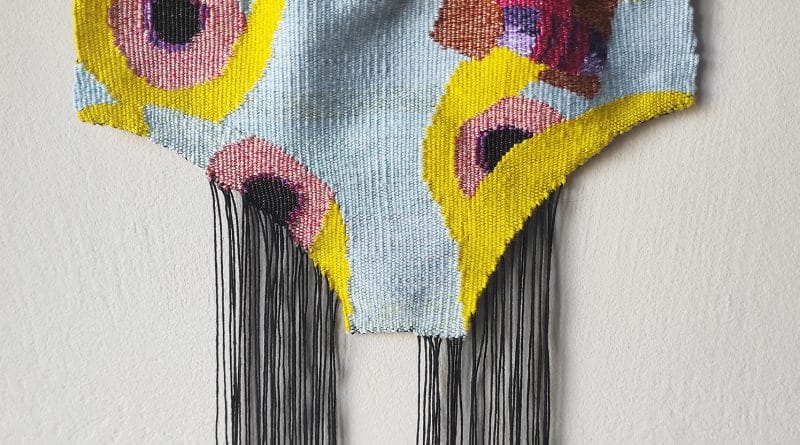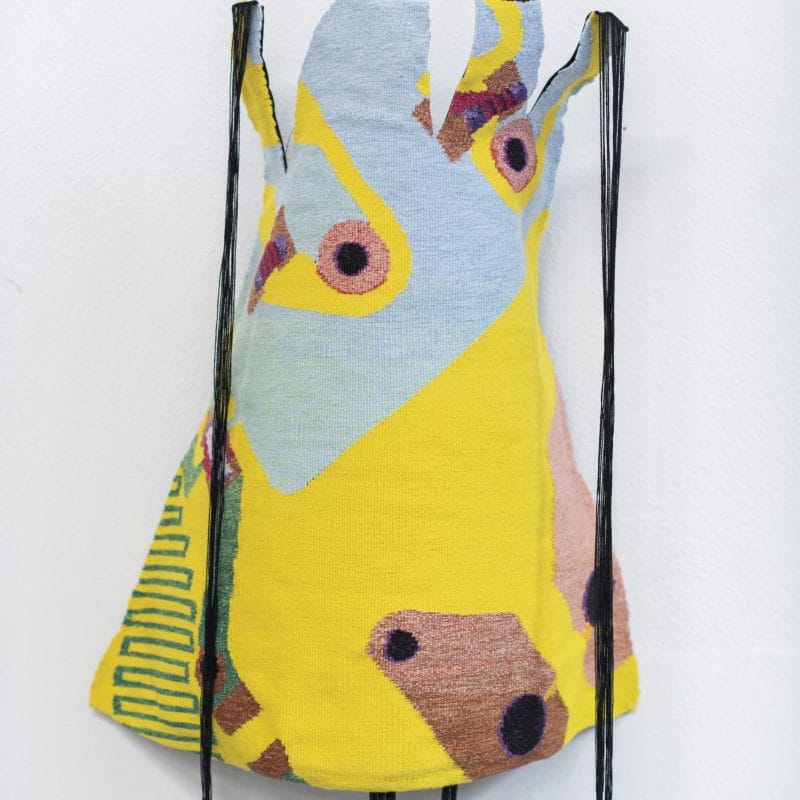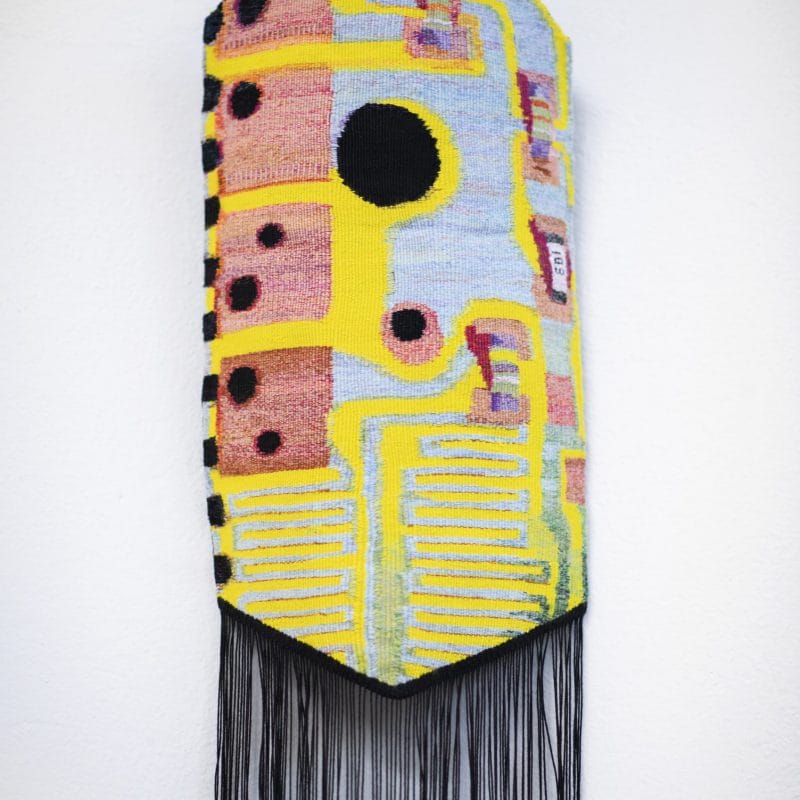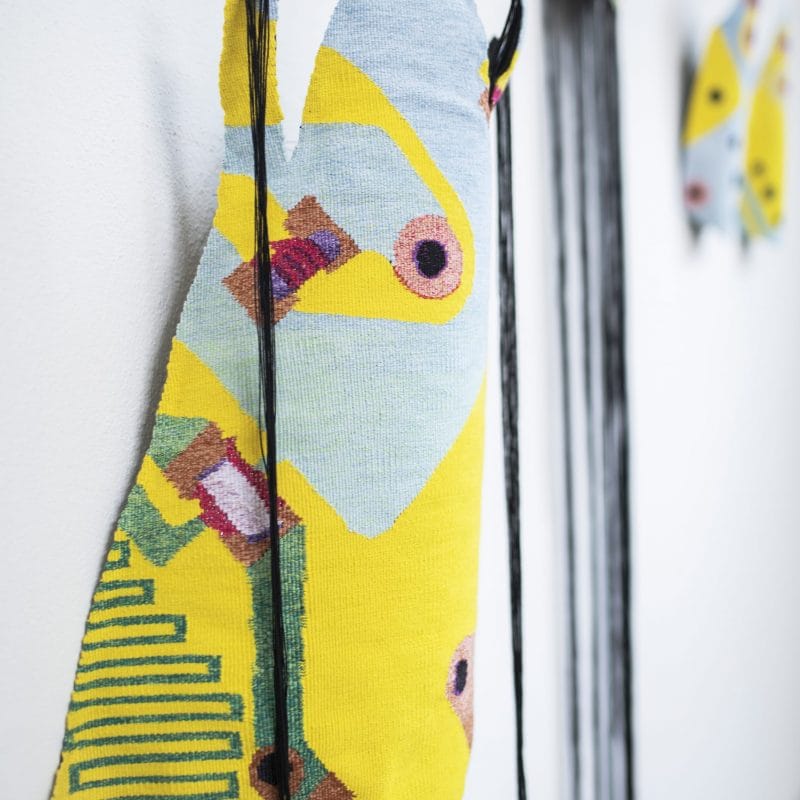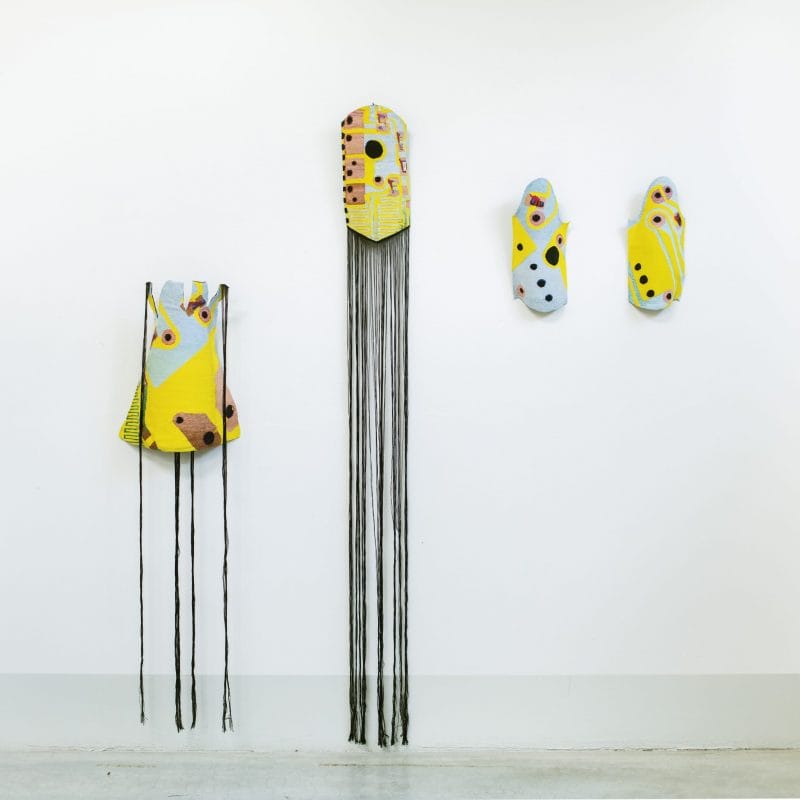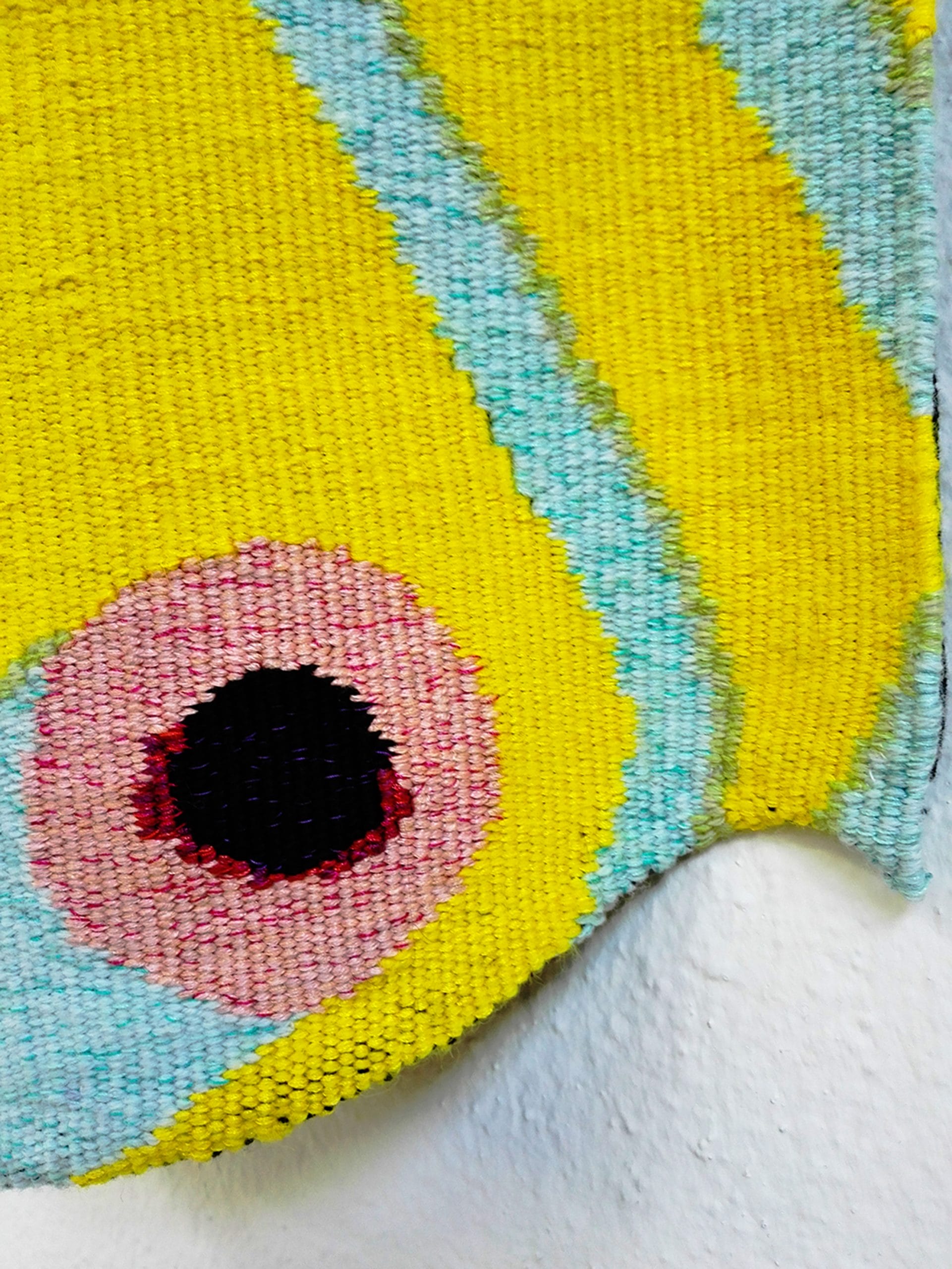BODY OF WORK #5
A small tapestry by Cristina Mariani was selected for the Irene Davies Award at the ATW
Cristina Mariani’ technical skills in weaving boldly sustain and nourish her artistic practice.
For the second time, she has been selected among the finalists of the Irene Davies award dedicated to small tapestries woven by emerging artists. This year, 22 candidates from 10 countries were selected, and she is the only Italian.
Mariani studied a two-year of weaving and tapestry techniques at the San Giacomo School of Ornamental Arts in Rome. In 2018, she was in Florence, studying an MA in Textile Art: a collaboration between the Academy and the LISIO foundation.
All her projects, although ranging in different areas, have something in common: weaving. Her tapestries, decorative panels and textile sculptures are created within artistic residences for galleries or museums. A second production sits in the field of crafts sprouting from collaborations with architects or high fashion designers. There is excellent coherence between the techniques she uses and the subject matter of her works.
The small tapestry selected for the Irene Davies Award is part of the “Body of work” series, consisting of medium-sized sculptural tapestries. These, loom woven, are transported in three dimensions acquiring a concave or convex shape.
The series was conceived and woven in 2020, during the lockdown.
Each tapestry is conceived as a body fragment.
“At the time, I was thinking how broken we were as bodies. On the one hand, there was an extreme need for protection, and on the other hand, we were totally disembodied. We only existed digitally. The patterns I chose present the shapes of electronic circuits, referencing the digital world. Aside from that, organic forms inspired by the world of insects are also visible.
Ph. Credit Cristina Mariani
This series explores two aspects of the traditional tapestry: the bidimensional element and the role of the warp, which should remain invisible.
“I wanted to add three-dimensionality to my tapestries, transforming them into sculpture. In “Body of Work”, I investigated two aspects of the traditional tapestry: the bi-dimensional aspect and the role of warp which should not be visible. Instead, I’ve used black warp threads as an aesthetic element, leaving the unwoven part free to fall from the tapestry.
I often weave irregularly shaped tapestries that I finish inserting warp threads into the fabric; this creates a natural wavy or convex surface, giving some volume to the tapestry. For the weft, I choose yarns according to the visual effect I want to obtain, wool and opaque yarns for a “background” effect and cotton, viscose, silk, iridescent and more lucid fibres to get a “stand out” effect. I work with thin yarns, using multiple plies for one weft; this allows me to obtain subtle shades of colours.”
Ph. Credit Cristina Mariani
PROJECTS IN PROGRESS
Beyond this exciting international achievement, Cristina is steadily developing other projects.
Metamorphic. Ph. Credit Cristina Mariani
MINERALIER began in 2019 within a program of micro-residencies launched by the Academy of Fine Arts in collaboration with the University of Florence, promoting a mutual exchange between art and science.
The artist had chosen to collaborate with the Stone Materials and Applied Geology laboratories.
Always fascinated by the world of minerals, Mariani considers the stones as “miniature stories, silent narrators.”
“The concept of weaving also exists in geology to indicate spatial relationships among the components of the rocks”, she says.
Cristina scrutinized thin sections of rock samples under a polarized light microscope; the various components of the rocks appear in different colours according to their properties. The obtained images are the starting point for the development of textile panels. Under the microscope’s lenses, an “absolutely fantastic microcosm” appears, invisible for the naked eye.
In this project, we see juxtaposing a type of rock with a particular textile technique by the analogy of constitution and construction.
“The intrusive magmatic rock (a granite) was made with the jacquard loom. The electronic interface allows highlighting the granular texture: a groundmass in which larger crystals stand out. Here, the background is composed of different ground weaves on which a black and gold brocade is performed. This piece was made at the Lisio Foundation in Florence, the project’s sponsor.
The metamorphic rock (low grade, deriving from sandstone) was performed with the tapestry technique, highlighting the slow transformation the original rock underwent following an increase in temperature and pressure. Tapestry is a prolonged process technique in which the discontinuous wefts are pressed with force to create the surface design.
For the sedimentary rocks, I used a heddle loom to obtain a more layered and textured surface.”
Jacquard-Granito. Ph. Credit Cristina Mariani
FUTURE DEVELOPMENTS:
The artist plans to develop this project further in collaboration with the geology faculty of Perugia and with the PARSEC of Prato. She’ll focus on Prato’s green serpentine marble and local stone from the area of Spoleto and Perugia.
Still, in the coming weeks, the research in-between rock and texture will continue within the “Ottovolante Sulcis residency program”, Sant’Antioco, Sardinia. The project will investigate the perception of soil and rocks as immutable and inert entities according to a man’s time, who considers motionless what instead moves slowly. The chromatographs obtained from soil samples, taken from different essential spots of Sant’Antioco’s island, will inspire circular tapestries woven with local wool/yarn, dyed with local materials (natural dye) strips of old fabrics/clothing recycled or donated by the locals. The idea is to create totemic objects to celebrate Sant’Antioco, its pivotal places, community, textile traditions, and land.
To follow Cristina’s work:
website: http://www.cristinamariani-art.com
IG: @crisse_nf
